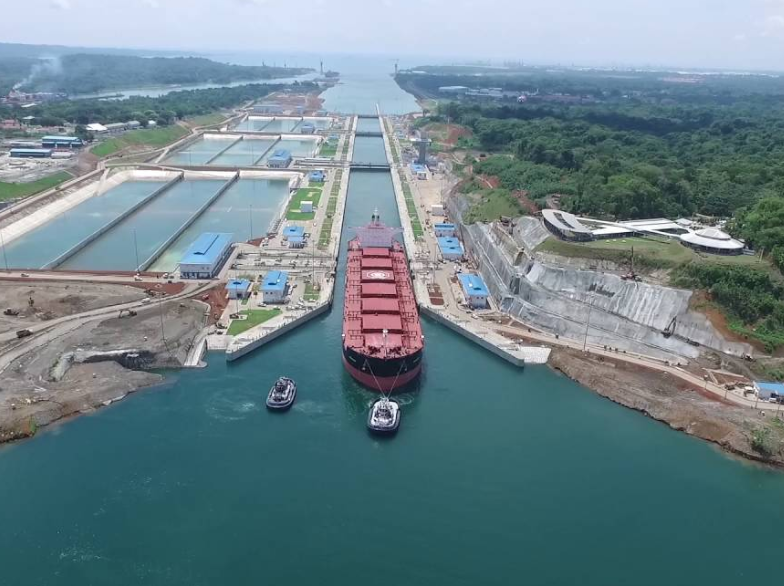
The Panama Canal Authority is keeping a close eye on the challenges the industry is facing at the moment due to the COVID-19 pandemic and is bracing for various potential scenarios.
Even though the waterway remains open to facilitate global trade, there are numerous uncertainties ahead, one of them being the likelihood of shipping companies to use alternative routes to save costs and adjust their sailing routes to the fast-changing shipping schedules.

The canal authority said it was assessing the evolution of the pandemic in order to have “a holistic picture of the situation while making sure the most up-to-date data is used to inform the canal’s decision-making. ”
The key alternatives to the Panama Canal include the Suez Canal as well as the Cape of Good Hope.
A week ago, reports emerged that French shipping major CMA CGM was bypassing the Suez Canal and sending three of its containerships from Singapore to Le Havre around Africa.
The detour around Africa increases the sailing distance by 3,000 nautical miles and it also means burning more fuel as ship speeds are increased in order to meet delivery schedules.
Deploying ships around the southern tip of Africa and South America to dodge Suez Canal and Panama Canal tolls is uncommon but not completely unprecedented.
The trend picked up during 2015-2016 as liners turned to longer distances to provide some ease to the tonnage overcapacity, which might be an option as well during the “Great Lockdown”.
Burning more fuel, especially in the wake of the IMO 2020 regulation’s entrance into force would have been more costly a few months ago.
However, with the oil price war pushing down the price of compliant fuels, the bypassing might even turn out to be more economical.
Furthermore, the canal authority said it was closely monitoring the state of the US-China trade relationship, the implementation of IMO2020 guidelines, the price of oil, the implementation of water conservation measures and draft adjustments.
For the time being, volumes at the canal have not been significantly impacted.
The canal has closed the first half of the 2020 fiscal year (FY20) with a tonnage of 258.4 million Panama Canal tons (PC/UMS).
The 258.4 million PC/UMS was registered from October 2019 to March 2020, compared to the 247.4 million PC/UMS tons intermodal for the first half of the current 2020 Fiscal Year.
Meanwhile, the Panama Canal registered 7,528 transits during the same period, versus the projected 7,029 transits.
In terms of total tonnage, the container segment continued to lead with 82.1 million PC/UMS tons during FY20 October-March, followed by bulk carriers at 41.8 million PC/UMS tons and chemical tankers at 39.9 million PC/UMS tons.
The waterway closed the 2019 fiscal year with a record tonnage of 469 million PC/UMS, a 6.2 percent increase compared to the previous fiscal year.
“Despite the challenges facing the industry today, our numbers demonstrate that world trade is still moving, and the Panama Canal is still playing its part to help ensure the continuity of global supply chains,” said Panama Canal Administrator Ricaurte Vásquez Morales.
“While we face uncertainty in the weeks ahead, we are committed, now more than ever, to ensuring our route remains open and reliable for the communities around the world that depend on us for essential goods.”
Responding to the pandemic, the waterway adopted a series of safety procedures across its operations, including the reduction of its on-site staff to only those essential to transit operations, and their strict compliance with safety and protection requirements.
The canal’s workforce and customer’s crews, all canal personnel, including pilots, boarding officers, and linehandlers who may need to board transiting vessels, are transported in small groups to reduce the risks of spreading the virus.
All vessels arriving to Panama Canal waters are also required to report their last ports of call, and any changes in their crews within two weeks prior to their arrival to any port with COVID-19 spread alert.
The post Panama Canal keeping an eye on the use of alternate routes amid COVID-19 uncertainties appeared first on Offshore Energy.
